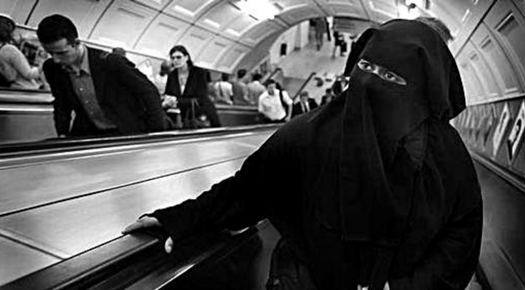
Thomas de Maiziere, German Interior Minister said that the burqa doesn’t fit in with open society such as one in Germany. The ability to see each other’s faces is crucial to everyday communication in our society—which should be the rule—and whoever breaks it must feel the consequences. Europe is a continent where Islam has rapidly expanded in recent years, and many countries (such as Germany) are trying to prevent possible consequences. France, for example, banned full-face veils in 2011, and that ban remains in place today.
Maybe inadequate terminology is the problem, because most non-Muslim people don’t know the exact differences between the veils worn by Muslim women. There are many different veils, such as burqas, niqabs, hijabs, burkini, etc. Burqas are the most rigid kind of veil that covers the woman’s entire body, and it is more common among Afghan and South Asian Muslims. Slightly less covering than the burqa is the niqab, which covers the face, while a burqa covers the whole body from the top of the head to the ground.
The niqab is preferred by some Arab Muslim women and more widely seen in Europe than burqa. On the other side, there is a hijab—a veil traditionally worn by Muslim women in the presence of adult males outside of their immediate family—which usually covers the head and chest. This term can also be used to refer to the seclusion of women from men in the public sphere. We shouldn’t forget the burkini, a type of swimsuit for women, designed in Australia by Aheda Zanetti. In 2016, a number of French municipalities banned the use of the burkini, which sparked an international controversy. When placing restrictions on society, in particular a hallmark of faith, it is very important to consider the impact this will have on daily life.
So the question arises: How many women actually wear the full-face veil in Germany? A 2008 survey conducted by the Federal Office for Migration and Refugees showed that approximately 28 percent of Muslim women and girls wore a headscarf. The large majority of Muslims in Germany are of Turkish origin (63.2%) followed by smaller groups from Pakistan, countries of the former Yugoslavia, Arab countries, Iran and Afghanistan. Because Germany has seen a large influx of Muslim immigrants since then—many of whom come from places like Syria where more people wear the niqab or the burqa—we need more information to answer this question.
According to some researchers, Germany and France have the largest Muslim population among the European Union countries. As of 2010, there were 4.8 million Muslims in Germany (5.8% of the country’s population) and 4.7 million Muslims in France (7.5%). In Europe and Asia overall, however, Russia’s population of 14 million Muslims (10%) is the largest on the continent. Last year recorded the highest inflow of Muslim population in Germany.
France's Interior Ministry released a study that said niqabs were worn by fewer than 2,000 women in the country—hardly a significant portion of the country's Muslim population, now estimated at 7.5 million—and very few, perhaps none, wore the burqa. Actual effects of these bans on Muslims aren’t known. Agnes De Feo, a sociologist and documentary filmmaker who since 2009 has interviewed around 150 women who wear the veil, said that most women who wore the veil before the ban now stay home. The women who publicly wear the full-face veil are a new breed; they are far more interested in provocation than those who came before. The conclusion is that the ban in France created a revolt among women who wear the veil now as a form of protest rather than religion.
When asked about the possibility of a ban similar to the one imposed by France in 2011, chancellor Angela Merkel said that she does not support a full burqa ban, citing the likely objections from the constitutional court. Additionally, she believes women who wear the burqa have “little chance to integrate” into German society. How this debate in Germany will be resolved—and whether the positive effects of a burqa ban can be stronger than the negative ones—remains to be seen.
Photo Credits: FrontPage Mag
